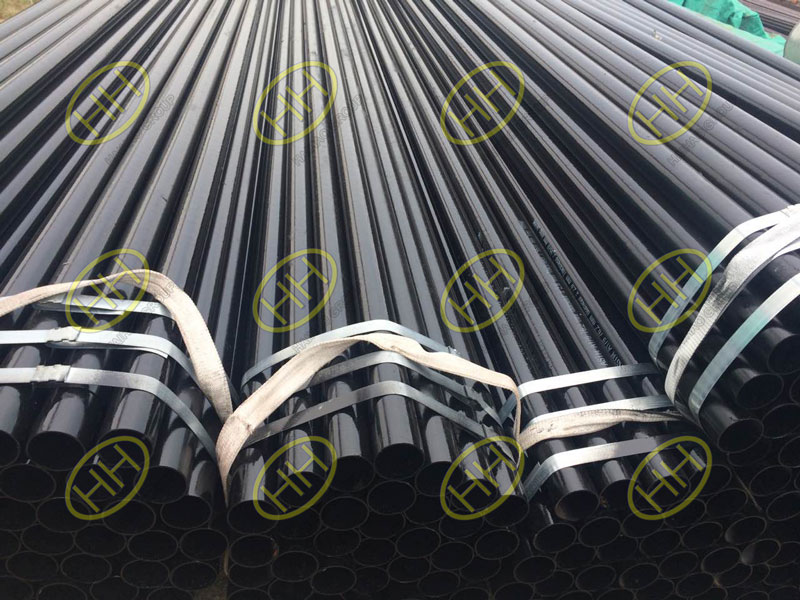Comparison of pipe and tube
Pipes are used for transporting fluids and gases in Chemical, Petrochemical, Power Plants, Refineries, Storage units, compressed air systems, plumbing systems, etc. They are circular in cross-section and specified by Nominal Pipe Size.
Tubes are used for mechanical applications (Heat exchanger, Fired heater, Boiler, etc.), for instrumentation systems (used for measuring instruments); for structural applications, etc and could be rigid or flexible. They are specified by their outer diameter and tube wall thickness, in inches or in millimeters.
Let’s see the detailed comparison of pipe and tube below:
| Sr No | Parameter | Pipe Characteristics | Tube Characteristics | |||||
| 1 | Shape | Always cylindrical or round in shape | In general, cylindrical. However, different other shapes like square, rectangular, etc. are available. | |||||
| 2 | Size | Pipe is Specified by Nominal Pipe Size (NPS) or Nominal Bore (NB). | The size of Tubes are specified in millimeter or in inches by outside diameter. | |||||
| 3 | Diameter | The outside diameter of pipe up to size 12″ are numerically larger than corresponding pipe size | Outside diameter of tubes is numerically equal to the corresponding size. | |||||
| 4 | Thickness | Pipe Wall thickness is expressed in schedule number that can be converted into mm or inches. | Tube Wall thickness is expressed in millimeter, or inches, or BWG (Birmingham wire gauge.) | |||||
| 5 | Thickness Increment | Pipe thickness depends on the schedule, so there is no fixed increment | The thickness of tubes increases in standard increments such as 1 mm or 2 mm | |||||
| 6 | Application | Used in all Process, Power & Utility lines to carry fluids. | Generally used in tracing lines, tubes for heat exchanger & fired heater & in instrument connection. They are more prevalent in medical area, construction, structural or load bearing. | |||||
| 7 | Availability | Available as the small bore and the big bore | Normally small-bore tube is used in process piping. For structural use, tubes are available in custom sizes. | |||||
| 8 | Structural Rigidity | Always rigid and resistant to bending | Available as rigid as well as flexible depending on the application. Rigid tubes are normally used in structural applications whereas copper and brass tubes can be flexible. | |||||
| 9 | Joining and Stability | Joining pipes is more labour intensive as it requires flanges, welding, threading, etc. | Tubes can be joined quickly and easily with flaring, brazing or couplings, but for this reason, they don’t offer the same stability | |||||
| 10 | Tolerance | Pipe tolerances are not too restrictive. | Tolerances are very strict with tubes compared to pipes and tubes are often more expensive to produce than pipes | |||||
| 11 | Manufacturing | Pipe manufacturing is easier as compared to tubes | Tubes need cumbersome tests, inspection and quality control than pipes. | |||||
| 12 | Cost | Cheaper | Costlier | |||||
| 13 | Packing & Delivery | Delivered in bundle as bulk item. Delivery time is short. | Tubes are usually wrapped with wooden box or thin film and delivered with much care. Delivery time is longer. | |||||
| 14 | Production Quantity | Produced in mass quantity and for long distance applications. | Produced in small quantity depending on requirement. | |||||
| 15 | End Connection | Normally plain or bevelled for welding purposes | With coupling ends, irregular ends, special screw thread etc. | |||||
| 16 | Surface Finish | Inner and Outer surface is rough with comparison to tube | Normally, both inner and outer surface are smooth | |||||
| 17 | Common material | Carbon Steel | Alloy Steel | |||||
| 18 | Design Codes & Standards | Thickness is decided as per governing codes like ASME B 31.3/ B31.1/ B 31.4/ B31.8 or IBR Codes | Depending on use thickness is decided. | |||||
If you need pipe or tube,contact Haihao Group for the enquiry. Email:sales@haihaogroup.com

